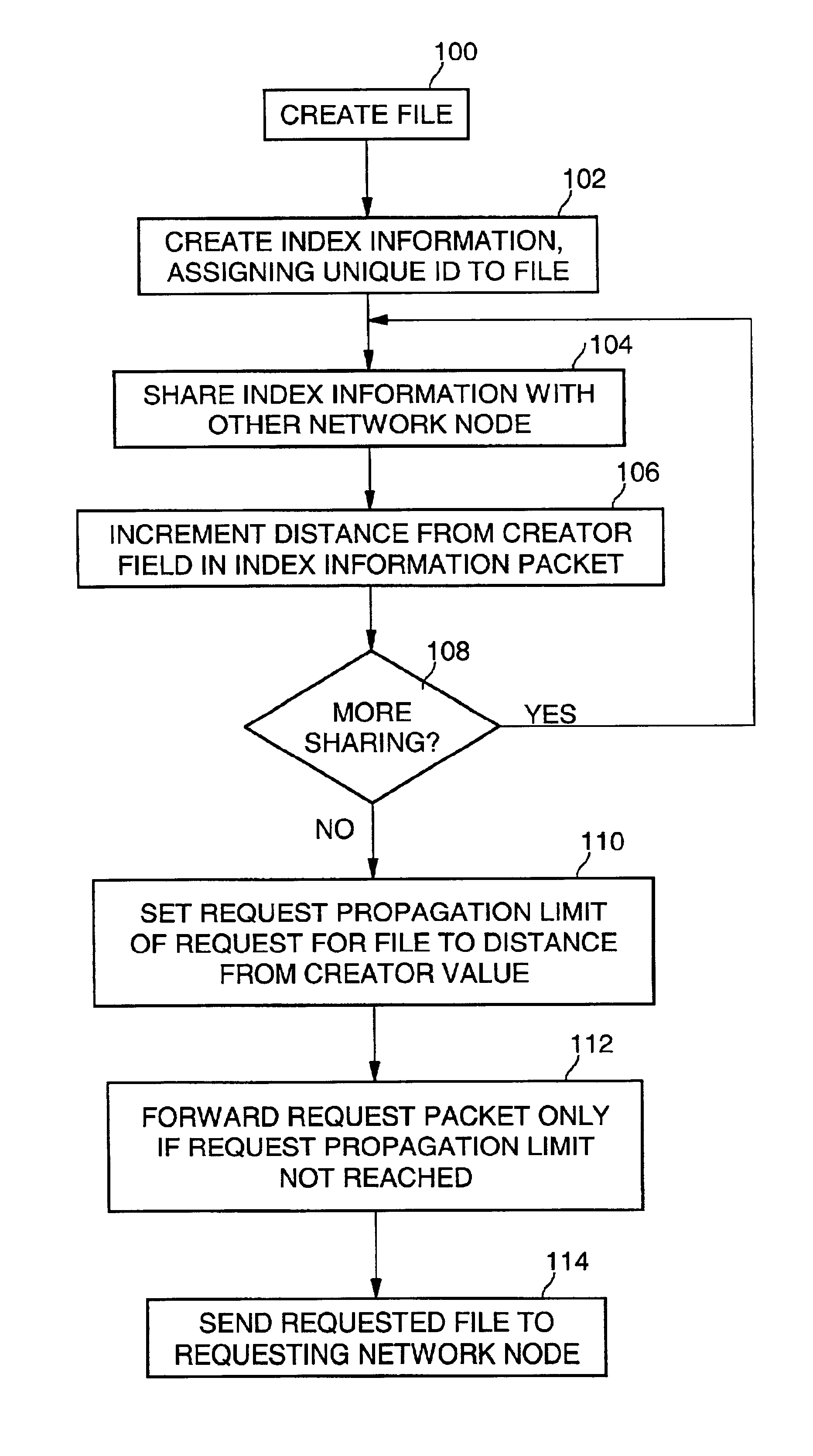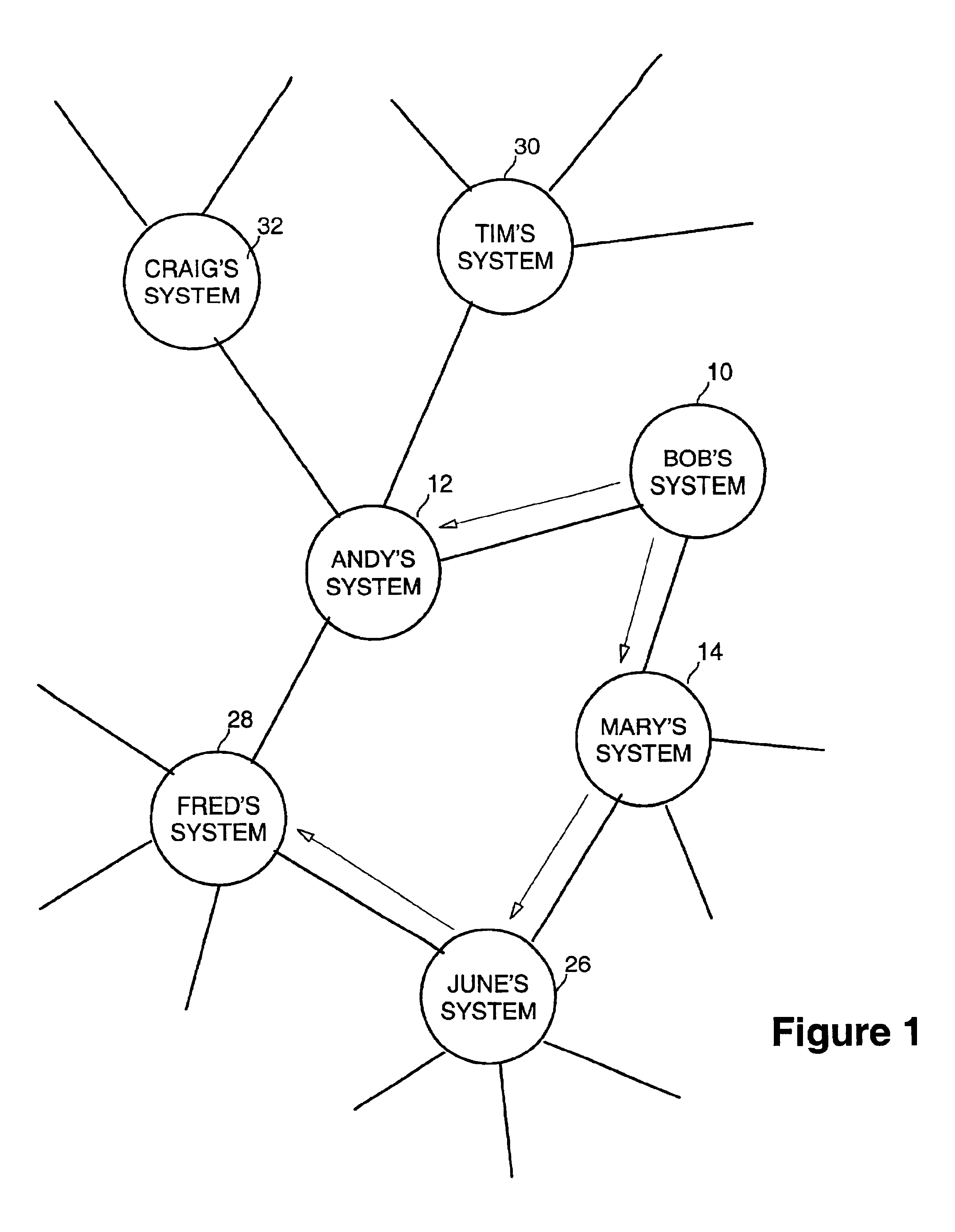Limiting request propagation in a distributed file system
a file system and request technology, applied in the field of distributed file systems and protocols, can solve the problems of consuming valuable network resources unnecessarily, limiting request propagation, and neither of these systems have a way to intelligently limit the time-to-live valu
- Summary
- Abstract
- Description
- Claims
- Application Information
AI Technical Summary
Problems solved by technology
Method used
Image
Examples
Embodiment Construction
An embodiment of the present invention is a method of limiting request propagation in a distributed file system operating as a private peer to peer network. In one embodiment, the invention may be implemented in a peer to peer media sharing system. In typical peer to peer media sharing systems such as Napster and Gnutella, the file data being shared among users is professionally created and widely distributed data (e.g., music files encoded in the Moving Pictures Experts Group (MPEG) audio layer 3 (MP3) format, digital video clips encoded in various formats, etc.). That is, the data may be posted and made available in multiple copies and at multiple network nodes within the distributed network. In contrast, in embodiments of the present invention, the system may be designed to share individually created and narrowly distributed data. For example, the data being shared may be digital photographs or digital videos created by an individual for sharing only among his or her immediate so...
PUM
 Login to View More
Login to View More Abstract
Description
Claims
Application Information
 Login to View More
Login to View More - R&D
- Intellectual Property
- Life Sciences
- Materials
- Tech Scout
- Unparalleled Data Quality
- Higher Quality Content
- 60% Fewer Hallucinations
Browse by: Latest US Patents, China's latest patents, Technical Efficacy Thesaurus, Application Domain, Technology Topic, Popular Technical Reports.
© 2025 PatSnap. All rights reserved.Legal|Privacy policy|Modern Slavery Act Transparency Statement|Sitemap|About US| Contact US: help@patsnap.com



